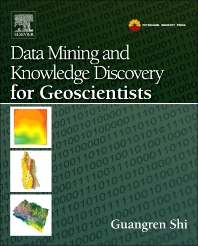Books in Computer science
Books in Computer science
The Computing collection presents a range of foundational and applied content across computer and data science, including fields such as Artificial Intelligence; Computational Modelling; Computer Networks, Computer Organization & Architecture, Computer Vision & Pattern Recognition, Data Management; Embedded Systems & Computer Engineering; HCI/User Interface Design; Information Security; Machine Learning; Network Security; Software Engineering.
- 1st Edition
- October 22, 2013
- Roger F. Malina + 3 more
- English
- Paperback9 7 8 0 0 8 0 3 6 9 7 8 5
- eBook9 7 8 1 4 8 3 2 9 3 7 6 9

Electronic Art
- 2nd Edition
- October 16, 2013
- Joshua Feldman + 2 more
- English
- eBook9 7 8 0 1 2 4 1 7 1 4 5 9

Eleventh Hour CISSP
- 1st Edition
- October 16, 2013
- Bran Selic + 1 more
- English
- Paperback9 7 8 0 1 2 4 1 6 6 1 9 6
- eBook9 7 8 0 1 2 4 1 6 6 5 6 1

Modeling and Analysis of Real-Time and Embedded Systems with UML and MARTE
- 1st Edition
- October 9, 2013
- Guangren Shi
- English
- Hardback9 7 8 0 1 2 4 1 0 4 3 7 2
- eBook9 7 8 0 1 2 4 1 0 4 7 5 4

Data Mining and Knowledge Discovery for Geoscientists
- 1st Edition
- October 7, 2013
- Joe Celko
- English
- Paperback9 7 8 0 1 2 4 0 7 1 9 2 6
- eBook9 7 8 0 1 2 4 0 7 2 2 0 6

Joe Celko’s Complete Guide to NoSQL
- 1st Edition
- October 2, 2013
- Allan Collins + 1 more
- English
- Paperback9 7 8 1 5 5 8 6 0 0 1 3 3
- eBook9 7 8 1 4 8 3 2 1 4 4 6 7

Readings in Cognitive Science
- 2nd Edition
- October 1, 2013
- Jason Andress + 1 more
- English
- Paperback9 7 8 0 1 2 4 1 6 6 7 2 1
- eBook9 7 8 0 1 2 4 1 6 6 3 3 2

Cyber Warfare
- 1st Edition
- September 28, 2013
- Vinod Joseph + 1 more
- English
- Paperback9 7 8 0 1 2 3 9 7 8 7 7 6
- eBook9 7 8 0 1 2 3 9 7 8 8 1 3

Network Convergence
- 5th Edition
- September 26, 2013
- David A. Patterson + 1 more
- English
- eBook9 7 8 0 1 2 4 0 7 8 8 6 4

Computer Organization and Design MIPS Edition
- 1st Edition
- September 25, 2013
- Donna Tedesco + 1 more
- English
- Paperback9 7 8 0 1 2 4 0 4 7 0 0 6
- eBook9 7 8 0 1 2 4 0 4 7 1 4 3

The Moderator's Survival Guide